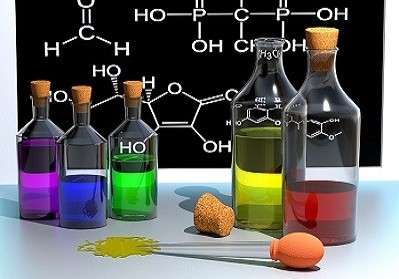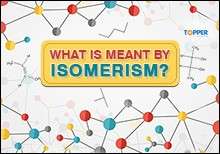CBSE Class 12 Chemistry Theory: Important Concepts

Here we list Important Concepts for CBSE Class 12 Chemistry.
By 07th Mar, 2016 | 03:24 pm
ShareChemistry is a multidisciplinary subject. It is divided into three sections namely Physical chemistry, Inorganic chemistry and Organic chemistry.
Physical Chemistry:
- This section requires practice of numerical-based chapters (solid state, solutions, electrochemistry and chemical kinetics).
- Revise definitions, laws, formulae, postulates, graphs thoroughly. First understand the theory properly and practice problems based on it every day unit wise.
- Attempting Numericals:
- Do not ignore numerical problems as most of the times, the problems are direct application of the formulae mixed with the understanding of a topic. Mastering numerical problems is a good way to score marks.
- Start the answer by writing the skeleton formula in standard notation followed by substitution of values with units.
- Conversion of units should be taken care of. The final answer must be written with units.
- Numericals carry step-wise marking. At times it happens that due to lack of time these questions remain un-attempted. In that case, even if you write the general formula and substitute the values, you manage to score some of the total marks allotted to the question.
Inorganic Chemistry:
- This section requires lots of learning of valency, oxidations states, hybridized structures, chemical reactions, processes and preparation of different chemical compounds.
- Use mnemonics, such as a formula or a rhyme for lenthy concepts, that will aid in remembering.
- For example, to remember elements in lanthanoids in the order of their atomic number, one can frame a rhyme taking initials of these elements.
Organic Chemistry:
- This section is probably the easiest and comprises the most scoring portion of chemistry in class 12.
- Haloalkanes and Haloarenes, Alcohols, Phenols and Ethers and Aldehydes, Ketones and Carboxylic Acids are the most important chapters from Organic chemistry. Revise nomenclature, isomerisation, name reactions, word problems, mechanisms and conversions.
- The last chapters; Polymers, Bio-molecules and Chemistry in Everyday are the simplest ones and scoring. Memory-based questions are usually asked from the chapters like polymers, chemistry in everyday life, bio molecules and surface chemistry.
Important Topics for CBSE Class 12 Chemistry
Physical Chemistry
(Total marks: 23)
Unit 1: Solid State (Marks approx: 4)
- Mostly problem based questions carrying 3 marks.
- Problem based on calculation of density of unit cell, packing in solids, packing efficiency, voids, number of atoms per unit cell in a cubic unit cell are important.
- Theory based questions from unit cell in two dimensional and three dimensional lattices, point defects.
Unit 2: Solutions (Marks approx: 5)
- One of the important chapters in scoring point of view.
- Two to three marks problem based questions are important.
- Problems and theory questions based on colligative properties, van’t Hoff factor.
- Vapour pressure of liquid solutions and Raoult’s law, Osmotic pressure.
Unit 3: Electrochemistry (Marks approx: 5)
- Problem based questions are important.
- Problems based on topics Kohlrausch’s law, EMF of cell, standard electrode potential, Nernst equation, effect of electrolyte concentration and temperature on the EMF of a cell, relation between Gibb’s energy change and EMF of a cell.
Unit 4: Chemical Kinetics (Marks approx: 5)
- Rate of Reaction (Average Rate and Instantaneous Rate)
- Factors Influencing Rate of a Reaction (Concentration, Temperature, Catalyst) - (Important)
- Order and Molecuarity of a Reaction (Zero Order, First Order, Second Order)
- Rate Law and Specific Rate Constant
- Integrated Rate Equations (Only for Zero and First Order Reactions)
- Half-Life of a Reaction (Important)
- Pseudo First Order Reaction
- Temperature Dependence of the Rate of a Reaction
- Effect of Catalyst (Very Important)
- Concept of Collision Theory
- Arrhenius Equation
- Activation Energy
Unit 5: Surface Chemistry (Marks approx: 4)
- Distinction between two things (such as lyophillic and lyophobic, physical absorption and chemical absorption, Enzymes and catalyst).
- Tyndall effect, Brownian movement, electrophoresis, coagulation, emulsion - types of emulsions.
Unit 6: General Principles and Processes of Isolation of Elements (Marks approx: 3)
- Three marks theory based question.
- Different processes in the metallurgy.
- Electrolytic refining, zone refining, Vapour-phase refining (Mond’s process and van Arkel method).
Inorganic Chemistry
(Total marks: 19)
Unit 7: p-Block Elements (Marks approx: 8)
- This one can be ascertained as the most important, scoring chapter carrying maximum weightage among all.
- Trends in properties along the groups 15, 16, 17 and 18 and along the periods for these particular groups.
- Preparation of different compounds, chemical structures, chemical properties.
- Be thorough with all the electronic configurations and chemical equations covered under this chapter.
Chapter 8: d- and f-Block Elements (Marks approx: 5)
- Get acquainted with general trends in chemical properties of d- and f-block elements.
- Outer electronic configuration, chemical reactivity of transition and inner transition elements, chemical structures.
Chapter 9: Coordination Compounds (Marks approx: 3)
- Werner's Theory
- Ligands
- Coordination Number
- Oxidation Number of Central Atom
- Colours and Shape of Coordination Compounds
- Double Salts and Coordination Compounds
- IUPAC nomenclature of coordination compounds (Very Important)
- Isomerism in Coordination Compounds
- Bonding in Coordination Compounds (VBT and CFT) (Very Important)
- Colour in Coordination Compounds (Important)
- Bonding in Metal Carbonyls
- Stability Constants and Stability
Organic Chemistry
(Total marks: 28)
Chapter10: Haloalkanes and Haloarenes (Marks approx: 4)
- It is the easiest and scoring chapter from organic chemistry.
- Chemical properties haloalkanes and haloarenes, conversion reactions and mechanisms of substitution reactions.
Chapter 11: Alcohols, Phenols and Ethers (Marks approx: 4)
- Alcohols: Nomenclature, Methods of Preparation of Alcohols (Important), Chemical properties of Alcohol, Identification of primary, secondary and tertiary alcohols, Mechanism of dehydration, Uses with special reference to Methanol and Ethanol.
- Phenols: Nomenclature, Methods of Preparation of Phenols (Important), Physical and Chemical properties, Acidic nature of phenol, Electrophillic substitution Reactions, Halogenation, Kolbe Reaction, Reimer-Tiemann Reaction
- Ethers: Nomenclature, Methods of Preparation of Ethers - Williamson Synthesis (Important), Chemical Properties.
Chapter 12: Aldehydes, Ketones and Carboxylic Acids (Marks approx: 6)
- Aldehydes and Ketones: Nomenclature and Structure of Carbonlyl Group, Methods of preparation – Gatterman-Koch Reaction (Important), Chemical properties, Mechanism of Nucleophilic Addition, Nucleophilic Addition and Nucleophilic Addition-Elimination Reactions (Important), Reactivity of alpha hydrogen in aldehydes (Important)
- Carboxylic Acids: Nomenclature, acidic nature, Methods of Preparation of Carboxylic Acids (Very Important), All Chemical Properties and Reactions (Important)
Chapter 13: Organic compounds containing Nitrogen (Marks approx: 4)
- Amines: Nomenclature, Structure, Methods of Preparation of Amines (Reduction of Nitro Compounds , Reaction of Halides with Ammonia , Hofmann Degradation of Amides , Reduction of Nitriles and Amides) (Very Important), Physical and Chemical Properties, Arylamines versus Ammonia, Alkylation (Important), Acylation (Important), Reactions of Ammonia (All the Reactions are Important), Identification of primary, secondary and tertiary amines.
- Cyanides and Isocyanides - will be mentioned at relevant places in text.
- Diazonium salts: Preparation, Chemical Reactions and Importance in Synthetic Organic Chemistry.
Chapter 14: Biomolecules (Marks approx: 4)
- Carbohydrats: Classification (aldoses and ketoses), monosaccahrides (glucose and fructose), D-L configuration oligosaccharides (sucrose, lactose, maltose), polysaccharides (starch, cellulose, glycogen)
- Proteins: Amino Acids, Structure of Protein, Denaturation of Proteins
- Enzymes: Mechanism of Enzyme Action, Enzymes, Isozymes and Coenzymes
- Vitamins: Classification and functions
- Nucleic Acids: DNA and RNA.
Chapter 15: Polymers (Marks approx: 3)
- General Methods of Polymerisation (Addition Polymerisation, Condensation Polymerisation)
- Thermoplastic polymers
- Thermosetting polymers
- Types of Polymerisation Reactions (Important)
- Addition Polymerisation or Chain Growth Polymerisation
- Condensation Polymerisation or Step Growth polymerisation
- Copolymerisation
- Some Important Polymers: Natural and Synthetic like Polythene, Nylon Polyesters, Bakelite, and Rubber (Very Important) (In Rubber, Buna-N and Buna-S can be asked)
- Biodegradable and Non Biodegradable Polymers
Chapter 16: Chemistry in Everyday life (Marks approx: 3)
- Drug-Target Interaction: Enzymes as Drug Targets, Receptors as Drug Targets (Very Important)
- Therapeutic Action of Different Classes of Drug: Analgesics, Tranquilizers Antiseptics, Disinfectants, Antimicrobials, Anti Fertility Drugs, Antibiotics, Antacids, Antihistamines.
- Chemicals in food - preservatives, artificial sweetening agents (Important), elementary idea of antioxidants.
- Cleansing agents- Soaps and its Type, Synthetic Detergents, Cleansing action (Important)
Important Resources
- Education Franchisee opportunity
- NCERT Solution
- CBSE Class 9 Mathematics
- NCERT Solutions for class 10 Science
- Sample Papers
- CBSE Class 9 Science
- NCERT Solutions for class 10 Maths
- Revision Notes
- CBSE Class 10 Hindi
- CBSE Class 10 English
- CBSE Class 10 English
- CBSE Class 10 Social Studies
- CBSE Class 10 Science
- CBSE Class 10 Mathematics
- Career In Science After 10
- Career In Commerce After 10
- Career In Humanities/Arts After 10
- NCERT Solutions for Class 10
- NCERT Solutions for Class 11
- Business Studies Class 12 CBSE project





